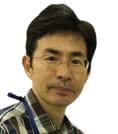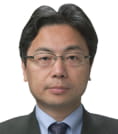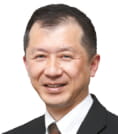- JST Home
- /
- Strategic Basic Research Programs
- /
 CREST
CREST- /
- Research Director/
- Elucidation of biological mechanism of extracellular fine particles and the control system/
- [Extracellular Fine Particles] Year Started : 2019
[Extracellular Fine Particles] Year Started : 2019
Sadao Ota
High-dimensional networked measurement for studying heterogeneity and dynamics of extracellular vesicles
Grant No.:JPMJCR19H1
Research Director
Sadao Ota

Professor
Research Center for Advanced Science and Technology
The University of Tokyo
Collaborator
| Ryosuke Kojima | Associate Professor Graduate School of Medicine The University of Tokyo |
| Koji Hase | Professor School of Pharmaceutical Sciences Keio University |
| Yusuke Yoshioka | Assistant Professor Institute of Medical Science Tokyo Medical University |
Outline
In this research, we develop high-dimensional networked measurement technologies for studying heterogeneity and dynamics of extracellular vesicles (EVs). High-dimensional cytometry will enable isolation of EVs for developing new EV classification methods, and networked measurement will clarify roles and dynamics of heterogeneous EVs at the single cell level.
Toshihiko Ogura
Development of a novel liquid-sample nano-scope and the comprehensive research on the extracellular nano-particles
Grant No.:JPMJCR19H2
Research Director
Toshihiko Ogura

Chief Senior Researcher
Health and Medical Research Institute
National Institute of Advanced Industrial Science and Technology (AIST)
Collaborator
| Kazuhide Sato | Designated Lecturer Garaduate School of Medicine Nagoya University |
| Yosuke Tashiro | Associate Professor College of Engineering, Academic Institute Shizuoka University |
| Shinya Murakami | Specially Appointed Professor Graduate School of Dentistry Osaka University |
Outline
To examine the influence of the extracellular nano-particles on living cells, it is required to observe the cells and the nano-particles directly in aqueous condition. In this study, we will develop a novel liquid-sample electron nano-scope that can directly observe the biological samples without staining and fixation. Moreover, we will analyze the influence of environmental nano-particles and antibody-particles on cells using this newly developed nano-scope.
Hirohisa Takano
Elucidation of the dynamics/kinetics of environmental particles and the underlying mechanisms by which they cause biological and immune responses, and identification of the exogenous/endogenous factors and molecules contributing to their health effects
Grant No.:JPMJCR19H3
Research Director
Hirohisa Takano

Honorary professor
Graduate School of Global Environmental Studies
Kyoto University
Collaborator
| Kenichiro Inoue | Professor School of Nursing University Of Shizuoka |
| Tomoaki Okuda | Professor Faculty of Science and Technology Keio University |
| Shunsuke Kimura | Associate Professor Faculty of Pharmacy Keio University |
| Etsushi Kuroda | Professor and Chairman Department of Immunology Hyogo College Of Medicine |
| Masahide Hamaguchi | Assistant Professor Department of Endocrinology and Metabolism Kyoto Prefectural University of Medicine |
| Yoshikazu Mikami | Associate Professor Graduate School of Medical and Dental Sciences Niigata University |
Outline
We will indicate that various environmental particles which exacerbate respiratory and allergic diseases have different entry routes into the body and underlying mechanisms of biological and immune responses. These differences can be used for the medical and biological (endogenous) categorization of the environmental particles. Next, we will elucidate the mechanisms by which diverse particulate matter with aerodynamic dias. ≤ 2.5 µm (PM2.5) induces biological and immune responses based on this endogenous categorization. Especially, we will identify the factors and molecules contributing to the health effects of PM2.5 via exogenous (environmental analysis) and endogenous (medicine and biology) approaches, and clear the connections between exogenous and endogenous factors based on the molecules and their changes.
Shinya Toyokuni
Effects of biological response to extracellular fine particles on carcinogenesis and atherosclerosis
Grant No.:JPMJCR19H4
Research Director
Shinya Toyokuni

Professor
Graduate School of Medicine
Nagoya University
Collaborator
| Haruka Omachi | Associate Professor School of Medicine Wakayama Medical University |
| Akihiro Okamoto | Group Leader Research Center for Macromolecules and Biomaterials National Institute for Materials Science |
| Yoshitaka Sato | Associate Professor Graduate School of Medicine Nagoya University |
| Masafumi Nakayama | Professor College of Pharmacy Ritsumeikan University |
| Toyoaki Murohara | Professor Graduate School of Medicine Nagoya University |
Outline
We are exposed to various extracellular fine particles in our daily life, as consumer products or as environmental pollutants. Here we will analyze the effects of extracellular fine particles, from the viewpoint of biological response, on two major causes of human mortality, cancer and atherosclerosis. We will use nanomaterials which would be used for wearable devices, and also enviomental fine particles for the evaluation. We seek to discover general principles in these biological effects, especially focusing on iron metabolism and ferroptosis. We would publish these results to contribute to safer working environment and civic life. Simultaneously, we undertake to discover novel drug delivery systems, based on our findings.
Rikiya Watanabe
Single particle technologies of extracellular vesicles for life and medical sciences.
Grant No.:JPMJCR19H5
Research Director
Rikiya Watanabe

Chief Scientist
Pioneering Research Institute
RIKEN
Collaborator
| Motoyuki Otsuka | Professor Academic Fields of Medicine, Dentistry, Pharmaceutical Sciences Okayama University |
Outline
Our study aims to elucidate the mechanism by which individual extracellular vesicles function in a precise manner, by developing novel single-particle technologies using multidisciplinary approaches, including bioMEMS, biophysics, chemical biology, and medicine. In addition, we are developing a methodology to investigate correlations between genetic mutations, dysfunctions, and diseases with single-particle sensitivity, which would provide new insights for biological as well as medical and pharmaceutical studies.













